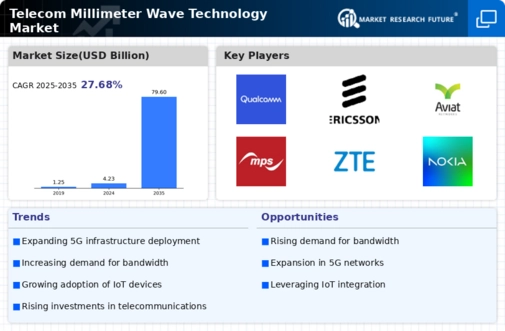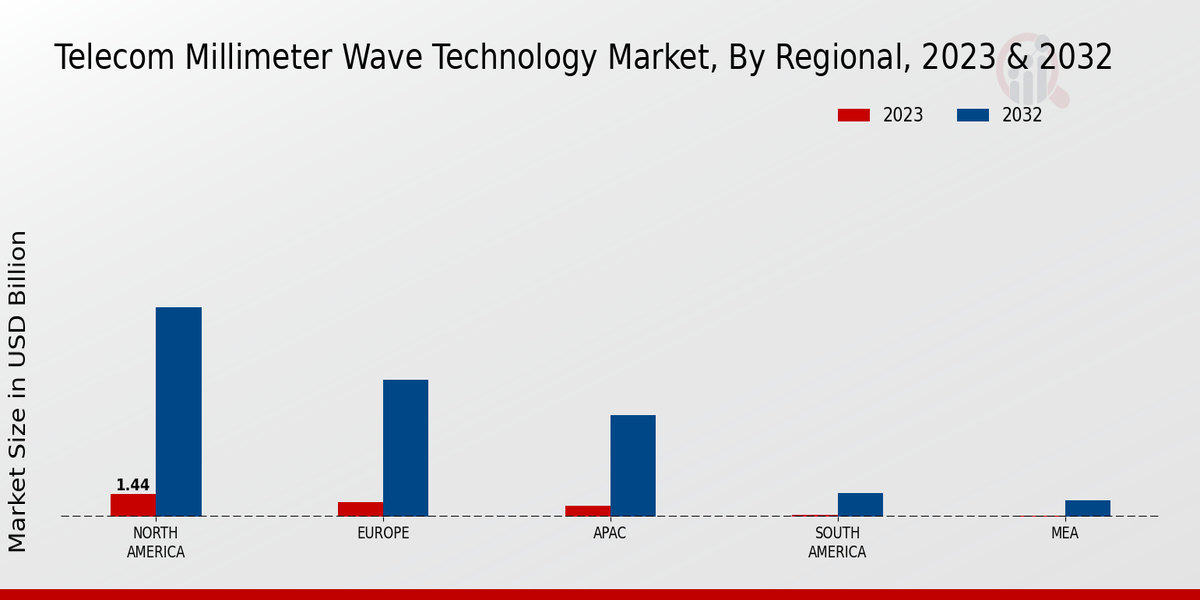The Telecom Millimeter Wave Technology Market has become an arena of significant competitive engagement, driven by the rapidly evolving telecommunications landscape. Millimeter wave (mmWave) technology, characterized by its ability to provide high bandwidth and low latency, is increasingly pivotal for next-generation communication networks such as 5G. The competition within this market is marked by innovation in technology, strategic partnerships, and aggressive investments aimed at enhancing network capabilities and infrastructure.
As telecommunications companies and service providers strive to meet the rising consumer demand for seamless connectivity, the players in this market are innovating robust solutions to unlock the potential of mmWave technology, positioning themselves to capture greater market share. This competitive environment has spurred advancements in hardware development, signal processing, and network management, which is critical for sustaining operational efficiency and delivering services effectively.
Focusing on L3Harris Technologies, the company holds a strong position in the Telecom Millimeter Wave Technology Market due to its commitment to advancing communication systems and solutions essential for modern networks. L3Harris Technologies excels in developing sophisticated mmWave technologies that cater to a diverse array of applications, including public safety communications, military systems, and commercial networks.
The company’s strengths lie in its expansive portfolio of advanced products, comprehensive R&D initiatives, and strategic collaborations, which enhance its capabilities in delivering cutting-edge solutions. Moreover, L3Harris Technologies has leveraged its expertise in integrated solutions, enabling it to provide customized high-performance communication systems that address unique customer needs, thereby reinforcing its competitive dominance in the mmWave segment. Qualcomm, a key player in the Telecom Millimeter Wave Technology Market, is recognized for its pioneering contributions to wireless technology innovation, particularly in the realm of 5G mmWave solutions.
The company's capabilities in developing state-of-the-art chipsets and processing technologies have positioned it effectively to support the deployment of mmWave networks globally.
Qualcomm has been instrumental in driving the industry towards the adoption of mmWave frequencies, providing high-speed data transmission and enhancing the overall user experience. Its strengths in strong intellectual property, extensive partnerships with telecom operators and manufacturers, and continuous innovation are pivotal in shaping market dynamics. Qualcomm's focus on enabling seamless connectivity and improving network efficiency through advanced technologies further solidifies its competitive advantage in the mmWave landscape, making it an integral player in the ongoing transformation of telecommunications.























